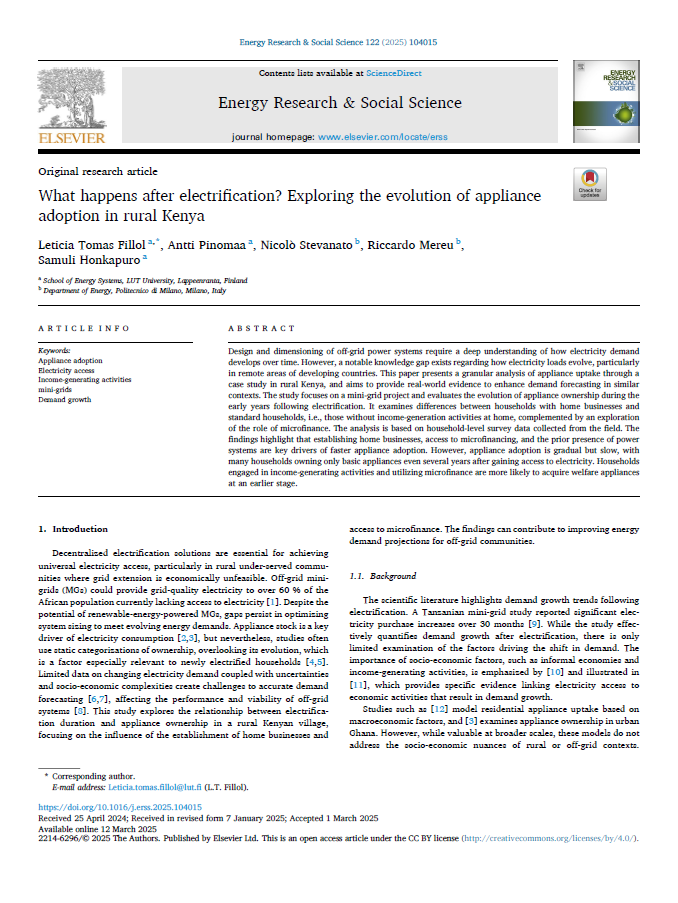What happens after electrification?
 |
Exploring the evolution of appliance adoption in rural Kenya
article Mar 2025 ; 13 pages
Aut. Leticia Tomas Fillol & Antti Pinomaa & Samuli Honkapuro & Riccardo Mereu & Nicolo Stevanato
Ed. Elsevier - ; Issn: 2214-6296
Site internet: https://www.sciencedirect.com/science/article/pii/S2214629625000969?via%3Dihub
Abstract:
Design and dimensioning of off-grid power systems require a deep understanding of how electricity demand develops over time. However, a notable knowledge gap exists regarding how electricity loads evolve, particularly in remote areas of developing countries. This paper presents a granular analysis of appliance uptake through a case study in rural Kenya, and aims to provide real-world evidence to enhance demand forecasting in similar contexts. The study focuses on a mini-grid project and evaluates the evolution of appliance ownership during the early years following electrification. It examines differences between households with home businesses and standard households, i.e., those without income-generation activities at home, complemented by an exploration of the role of microfinance. The analysis is based on household-level survey data collected from the field. The findings highlight that establishing home businesses, access to microfinancing, and the prior presence of power systems are key drivers of faster appliance adoption. However, appliance adoption is gradual but slow, with many households owning only basic appliances even several years after gaining access to electricity. Households engaged in income-generating activities and utilizing microfinance are more likely to acquire welfare appliances at an earlier stage. Contents:
Introduction p.1
Methodology p.2
Results p.3
Discussion and implications p.11
Conclusion and future work p.12
Publics-Cibles:
Université , Acteurs de coopération , Socio-économiste , Economiste
Mots clefs: |
matériels électriques (batterie, frigo...) (CI) (DT) (OP) (ope) , mini-réseau micro-réseau (CI) (DT) (OP) (ope) |
Pays concerné: |
Editeur/Diffuseur: |
|
Elsevier - |
En cas de lien brisé, nous le mentionner à communication@pseau.org